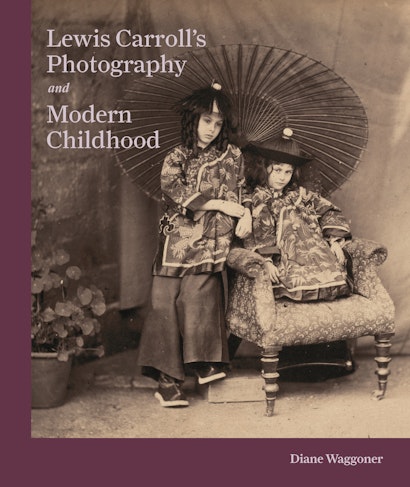Lewis Carroll began photographing children in the mid-nineteenth century, at a time when the young medium of photography was opening up new possibilities for visual representation and the notion of childhood itself was in transition. In this lavishly illustrated book, Diane Waggoner offers the first comprehensive account of Carroll as a photographer of modern childhood, exploring how his photographs of children gave visual form to emerging conceptions of childhood in the Victorian age.
Situating Carroll’s photography within the broader context of Victorian visual and social culture, Waggoner shows how he drew on images of childhood in painting and other media, and engaged with the visual language of the Victorian theater, fancy dress, and Pre-Raphaelitism. She provides the first in-depth analysis of Carroll’s photographing of boys, which she examines in the context of boys’ education and reveals to be a significant part of his photographic career. Waggoner draws on a wealth of rare archival material, demonstrating how Carroll established new aesthetic norms for images of girls, engaged with evolving definitions of masculinity, and pushed the idea of childhood to the limit with his use of dress and nude images.
This book sheds unique light on Carroll’s decades-long passion for photography, showing how his complex and haunting images of children embody conflicting definitions of childhood and are no less powerful today in their ability to challenge, fascinate, and shock us.
Diane Waggoner is curator of nineteenth-century photographs at the National Gallery of Art. Her books include The Art of the American Snapshot, 1888–1978 (Princeton), The Pre-Raphaelite Lens: British Photography and Painting, 1848–1875, and East of the Mississippi: Nineteenth-Century American Landscape Photography. She lives in Alexandria, Virginia.
"The best book yet written on Dodgson’s photography. Measured in tone and thickly referenced, it is also refreshingly open to seeing both sides of an argument. In this sense it reads as much like a book written by Carroll as one about him."—Robert Douglas-Fairhurst, V&A Magazine
"Diane Waggoner’s comprehensive study, lavishly illustrated with excellent reproductions of Carroll’s albumen prints, alongside letters and sketches, explores how his paintings and photographs helped shape emerging conceptions of childhood in the Victorian age. . . . The book will appeal not just to Carroll aficionados but to anyone with an interest in the development of photography in the 19th century."—Jonathan Harwood, Black & White Photography Magazine
"Diane Waggoner’s comprehensive study, lavishly illustrated with excellent reproductions of Carroll’s albumen prints, alongside letters and sketches, explores how his paintings and photographs helped shape emerging conceptions of childhood in the Victorian age."—Jonathan Harwood, Black & White Photography Magazine
"Waggoner illuminates the complexity of her subject, bringing to it both fresh context and academic rigor. . . . This is a book to read carefully, as well as to look at, and it will be a vital addition to Carroll scholarship. . . . The result is a descriptive and measured account of the making of photographs whose subjects are familiar to any Carroll scholar, as well as a number that are less well known—which ultimately makes the book something of a corrective in terms of its content and approach. . . . Waggoner’s book is strikingly beautiful but also . . . contributes so significantly to the history of childhood itself."—Jennifer Green-Lewis, H-Net Reviews
"The most detailed critical analysis of Dodgson’s photographs to date."—Jan Susina, Victorian Studies
"Diane Waggoner has written the first truly contextual, art historical account of Lewis Carroll's photographs of children."—Morna O’Neill, author of Walter Crane: The Arts and Crafts, Painting, and Politics, 1875–1890
"Waggoner explores Lewis Carroll's agency as a photographer in a new and important way. Her examination of Carroll's photographs of children revises longstanding historical accounts of his work and places Carroll's invention of what has become an abiding image of childhood among the cultural transformations of Victorian modernity."—Joanne Lukitsh, Professor of Art History, Massachusetts College of Art and Design

